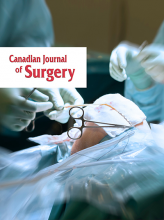Paget’s disease of bone is a localized disorder of bone remodelling that results in disorganized woven and lamellar bone.1–3 This leads to bone that is structurally weak and can undergo progressive deformity. If a total hip replacement is required in a femur affected by Paget’s disease, the deformity can be corrected by osteotomy and a very long stem used to prevent the redevelopment of deformity.4–7
Case Report
A 74-year-old patient had an arthritic hip and a severely deformed femur affected by Paget’s disease (Fig. 1). The femoral deformity was corrected by an interval procedure and the osteotomy stabilized by cortical strut allografts (Fig. 2).8 At a later date, a prosthesis of intermediate stem length was used in hip replacment (Fig. 3). Six months later the cerclage wires were removed and the allograft strut was noted to have united and bled when the periosteum was stripped. Surface shaving showed new bone growing into the vascular channels of the allograft. Radiographs obtained 3 years after the struts were applied showed that they appeared to have been completely replaced by “Paget’s bone” (Fig. 4).
Paget’s disease involves the whole femur. Stress fractures had occurred at the tip of the old intramedullary nail leaving the femur severely deformed.
An osteotomy was carried out at the summit of the deformity and the femur stabilized with an intramedullary nail and strut allografts. The deformity of the proximal femur was ignored.
Total hip replacement was carried out using a prosthesis with an intermediate stem length. The proximal deformity was corrected by osteotomy. The allograft has united over its complete length.
Radiologically the strut allograft has been completely replaced by Paget’s-type bone.
Discussion
We could find no previous reports of “Paget’s bone” invading strut allografts. The findings in our case suggest that strut allografts provide only temporary strengthening for the femur involved by Paget’s disease and that reinforcement by hip replacement with a very long stem is preferable in such cases.
- Accepted July 12, 1999.













